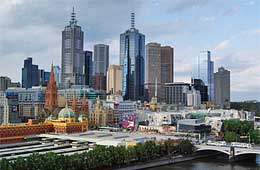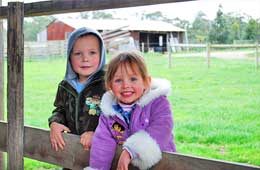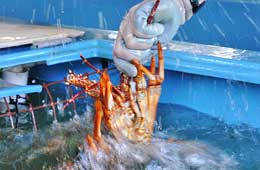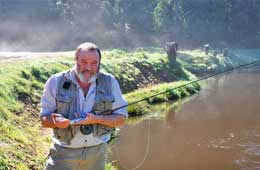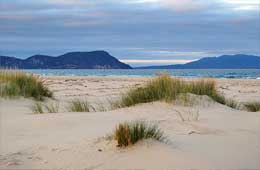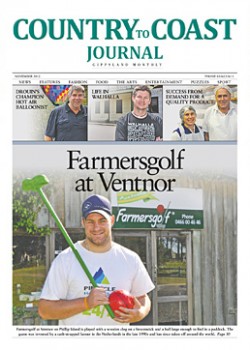The Australian Dairy Farmer magazine
Dairy farmer Aubrey Pellett, from Hill End in Victoria, was recently awarded a 2014 Nuffield Scholarship at the organisation’s national conference dinner in Perth. The scholarship, supported by the Geoffrey Gardiner Dairy Foundation, will allow Aubrey to study the future of productivity gain for dairy farming.
For seven weeks during June and July 2014, Mr Pellett will travel with a group of fellow Nuffield scholars to the Philippines, China, Canada, the United States, Ireland and France to investigate agricultural marketing, trade and environmental issues, and to experience the social and cultural aspects of each region.
Following that he will travel individually to study his chosen topic with plans to visit New Zealand where most of Australia’s ryegrass is developed to study ryegrass growth, the United States to look at GM technology and whether it is applicable to ryegrass breeding, then the Netherlands and Germany to study their robotic technology and farm automation. He also wishes to visit the United Kingdom, the birthplace of the Nuffield scholarship named after Lord Nuffield, to establish networks with other international Nuffield scholars and contacts in their industry.
Part of the scholarship is to submit a report which is due in February 2015 and an oral presentation of his findings due the following September.
Nuffield Australia’s Chairman Mr Terry Hehir said the long-term capacity of Australian agriculture to compete and succeed internationally will be determined by the ability of Australian farmers to recognise changing consumer preferences, adopt new technologies and production practices and maintain the sustainability of their operations by protecting their production environment.
“They need the confidence to back their judgement and make the changes necessary to grow, and providing young Australian farmers with this knowledge and confidence is the heart of the Nuffield Australia Farming Scholarship program.”
Mr Pellett, initially with a background of various banking roles in rural banking, marketing, product management and strategic planning, holds a Post Graduate Diploma in Information Systems, a Bachelor of Commerce (Majoring in Farm Management) and a Diploma in Farm Management. He is a director of GippsDairy and a director of Bonlac Supply Company who supply Fonterra Australia.
He has dairy farmed on his Hill End property with his partner Jacqui Morrison since 2002. The couple who have children Anneka, 10 and Jackson, 9, currently own and manage the 190-hectare farm with a 40-hectare leased support block, and they milk 450 cows.
They employ a husband and wife team individually – one as a production manager and one to do week day milking.
Mr Pellett said his study topic ‘The future of productivity gain for dairy farms’ is based on his view that the industry in Australia hasn’t seen any significant productivity gain for quite some time. “If we don’t get productivity gain then effectively our margins will keep getting smaller and our international competitive position will decline.” Through his study he plans to examine productivity opportunities for Australian dairy farmers looking 10 – 20 years in the future that will deliver more from less in the industry. He believes productivity gain is the only way to lift longer term profitability in terms of the margin. “Either we produce more from the same level of inputs – the same farm sizes and cow numbers but producing more milk, or produce the same amount of milk with less labour, more efficient cows or better yields of pasture.”
After completing the study he hopes to have a view of what the future of the industry might look like and what is going to lead to productivity gain whether it’s large individual impacts or a sequence of many small things.
He said he hopes to feed what he finds into the industry through Dairy Australia, The Geoffrey Gardiner Foundation, regional development programs under Dairy Australia, individual milk companies, possibly the DPI – anyone that has an interest in developing the dairy industry. “It may mean as an industry we need to do some development extension to capture productivity items or take international productivity drivers and adjust them for our Australian systems and conditions.”
Mr Pellett and his partner Jacqui are originally from New Zealand where they both worked in banking before becoming sharefarmers there in 2001.
“We moved to Australia in 2002 and found out we could lease farms, which was quite attractive because we could run our own show and make all our own decisions, so that’s what we did. In 2008, the farm owner wanted to sell and luckily we were in a position to purchase the farm from him. We think we have done reasonably well. When we came here, we only had a small car and a tiny amount of money, so it’s been a long and difficult journey but we have changed the farming system over time and made it more profitable.”
Their herd is about 10% jersey, half the herd is Friesian Holstein and then the balance is Friesian and Jersey crossbreds of varying degrees. He said initially they put Jersey over the whole herd because they liked the crossbred cows. “They are a hardy animal with a high fat and protein percentage and relatively easy to get in calf but we found it difficult to control the temperament and the udder conformation and we realised the price and the market for Friesians was higher giving us more options if we needed to sell heifers. We have been using Friesian Holstein sires for some time now and building the herd.”
He said they calve in the autumn to try and have pasture in the cow’s diet for their full lactation. “When we did spring calving, I became frustrated. Calves were born in August to October and then by November the farm was drying out and we had to feed out a lot of silage and grain, and calves were being weaned when we didn’t have paddock feed.
“The risk with autumn calving is that we carry a high stocking rate through winter when other farmers have dry cows and can destock, but the milk price systems that most companies operate during winter are nearly double the price or more than double, depending on the milk company. It means we can afford to feed a high level of supplementation then, which we need to do because our pasture growth rate is a lot lower, but with long rotations and good use of nitrogen, we are able to maximise winter pasture growth, and we generally have pasture until Christmas. Our cows are then dried off late January through February when the farm is dry.
“We harvest the spring surplus mainly as silage because it’s better feed value and the grass grows back. There’s better pasture then for the cows so it’s a pasture management tool as well. We have our own equipment so we can control the timing and cut silage fairly close to where we would have grazed it. Then we don’t have a long lock up period and there’s faster regrowth. The idea is to get it back into the grazing round pretty much without any down time. We do a bit of hay later but only on areas where it’s been too wet to get the timing right.
“Getting our grazing rotation right in conjunction with spreading nitrogen fertiliser at the right time, which we do ourselves, increases our production. We use the ‘Feeding pastures for profit’ approach so we have a spread sheet of every paddock on the farm with its size and a rating of how productive it is and we aim to graze ryegrass close to three leaves. At different times of the year the rotation rate needs to be varied so we allocate a certain amount of pasture for every feed, based on targeting a certain rotation length. In the winter it’s a much smaller area and in the spring it’s a larger area, and then we adjust how much supplement (hay, silage or grain) we feed.”
By Wendy Morriss
Copyright © 2014 Wendy Morriss: Freelance Journalist. All Rights Reserved
